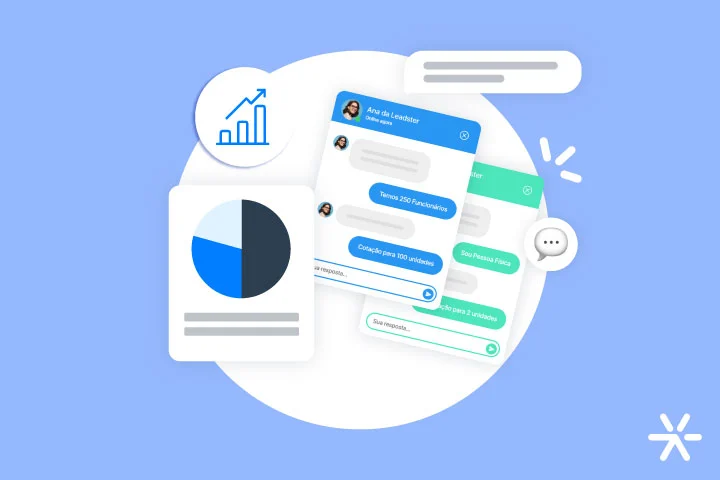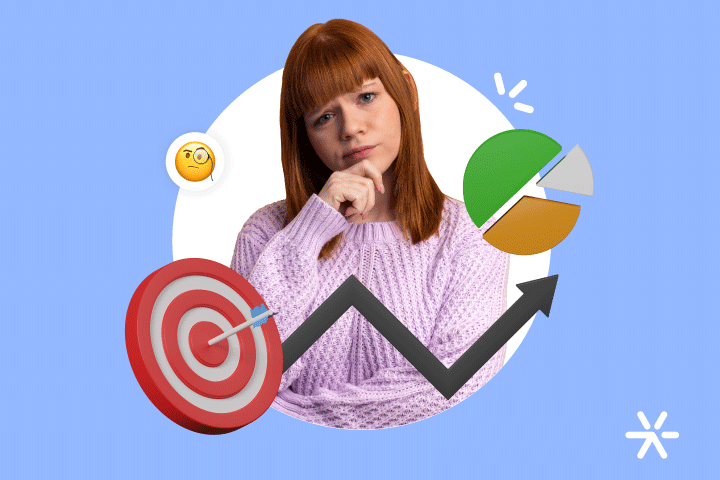AI in business: what’s real and what’s not
These days, any specialized publication in the corporate world is talking about AI in business in some way.
It could be a blog, an internal newspaper, a magazine, or a TV channel — everyone wants to know exactly how AI is being used today to transform businesses, accelerate production, and scale complicated projects.
And you know what? Whether you like it or not, AI is here to stay. It’s still difficult to say exactly how work will be after the refinement of these tools, but we’re already seeing that it probably won’t be the same anymore.
Or as Salgueiro would say in the Rio Carnival: “not better, not worse: just different.”
This article seeks to understand how different our routines will be from now on. And what new, different, and innovative things companies will produce with AI in business.
Ready?
What is Artificial Intelligence?
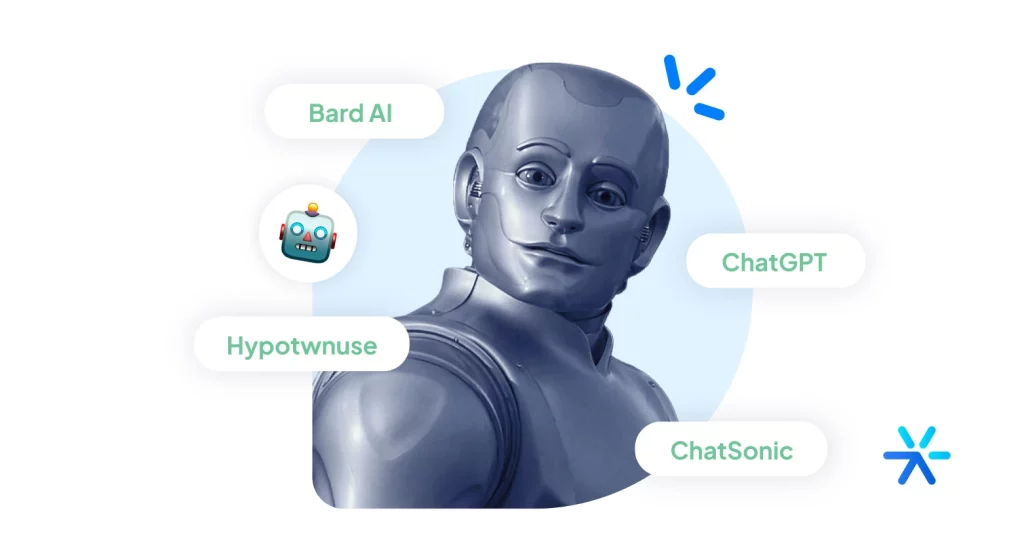
The term “Artificial Intelligence” has been used for some time in various marketing and sales solutions. In fact, its origins date back quite far: the first dedicated AI laboratory was founded in 1956.
Even Edgar Allan Poe, a great enthusiast of 19th-century technology, described the functioning of an automaton playing chess in his story “Maelzel’s Chess-Player.”
Unfortunately, in Poe’s case, the explanation was simpler: it wasn’t AI, but a chess player hidden inside the machine. 😅
🤓 Learn more: Artificial Intelligence in Digital Marketing – 30 Use Cases
But the AI we see in the news today is quite different from anything we’ve seen before. With computational advancements, our contemporary AI is a new model: Generative Artificial Intelligence.
This AI is different because it operates from a vast database provided by the Internet — or in specific use cases, provided by users themselves — to primarily generate text and images based on prompts.
Research is now focused on the analytical side of these intelligences. Besides producing text and images correctly, AI is taking the first steps to understand a situation and act accordingly.
This includes image and face recognition software, autonomous cars, and extensive research to apply Artificial Intelligence in business intelligence.
But what about today? Are there already businesses applying Generative Artificial Intelligence, like ChatGPT, for business, administrative, and commercial strategies?
A resounding yes comes from the homeland. Below, check-out the story of João Ferrão, the Portuguese man who started a business with ChatGPT as CEO:
João Ferrão: The Man Who Created a Company with ChatGPT as CEO
João Ferrão dos Santos, probably the most Portuguese name in the world, did what you reading this text might have considered doing one day: he opened ChatGPT and wrote, “Start a retail business, and I’ll open it.”
Not exactly in those words, and also not so simple, but the prompt’s idea was more or less that. And to no one’s surprise, ChatGPT did exactly that: it created a custom T-shirt store.
The report in Forbes Portugal brings super interesting details of the endeavor. João Ferrão and ChatGPT are the company’s co-founders, with Chat acting as CEO and creative director.
ChatGPT came up with the business idea, created the name (AISTHETIC), the logo, and the concept, which, despite being simple, makes total sense: it’s a T-shirt store with prints produced through the partnership between ChatGPT and another generative AI dealing with images.

One of the prints created with ChatGPT and the image AI
The initial idea worked so well that, despite its initial capital of €2,500, João Ferrão soon secured an investment of €100,000, and today his store generates over €12,000 per month.
Of course, here we have two heroes: ChatGPT itself and the investor who made the idea possible. But this is just the first step of what’s to come. And it already shows a super interesting functionality that we’ll also address throughout the article.
But for now, we need to learn a little more about the tools of Artificial Intelligence in to business. Check it out:
What Are the Main AI Platforms Today?
Before we delve into the uses of AI in business together, we need to dive a bit deeper into the tools available today.
As the field of corporate Artificial Intelligence is still taking its first steps, its uses are not yet fully categorized.
That is: there hasn’t been enough time for companies to determine standardized uses of AI, a methodology that applies it reliably and replicably.
We are at a moment where creativity reigns. Anyone familiar with Artificial Intelligence tools can develop their own business-focused applications.
Even you, reading this article, can follow this path. But to tread it, you must know it well.
The more people familiarize themselves with these tools on both superficial and deep levels, the more innovations will emerge. More uses will become popular, and more methodologies will be developed.
Shall we take this first step together? Discover now the 5 most popular examples of AI applications in business.
ChatGPT
The classic, though not the first example of Generative Artificial Intelligence.
ChatGPT is a text application that can provide convincing answers to quite complex questions using a preconfigured database.
The publicly available version today uses a portion of the internet content up to 2021 as its database.
But as a text model, the expectation is that it will become increasingly simpler to plug in your own specific database into apps using the GPT model, creating different and well-directed versions of Chat.
For example: a medical research center can train the AI with studies and scientific articles, and ask questions that will be answered based on that database.
Today, ChatGPT encounters some basic limitations, especially with constant hallucinations. The tool responds to practically anything, but some of these responses may be inventions of the AI.
Chatbots
Chatbots are Artificial Intelligence systems capable of understanding simple user questions and offering the necessary guidance, also in text form.
Technically, ChatGPT itself is a Chatbot: it receives text inputs and responds through text. The classic definition of a Chatbot.
What Chatbots lack is the common generative conversation of ChatGPT. They operate through simpler analysis, often configured by tool administrators.
Chatbots are widely used for lead generation on websites, such as Leadster. And also in simple service situations, such as on bank websites, online stores, etc.
Midjourney and DALL-E 2
These two tools basically do the same thing: they are generative AIs like ChatGPT, but instead of delivering text, they deliver images.
The operation is quite simple. You describe what you want, and the AI compiles all available references to create a completely original image in the style you request — even imitating real artists.
For example: see this image created with the prompt “Photography in the style of Helmut Newton”:

If you’re not familiar with the photographer’s style, see a reference image:

The resemblance is uncanny. Midjourney managed to reproduce, albeit superficially, key points of the photographer’s work: the use of light and shadow, the stoic and serious expression of the models, the close-ups, etc.
Even visual references taken from great directors of the French nouvelle vague, such as Godard and Truffaut, were reasonably adapted.
Some anatomical details will always be more difficult to reproduce for these two Artificial Intelligences. But still, they bring many uses for artists, designers, marketing agencies, and anyone else working with creativity in their daily lives.
Gupy
This is another type of Artificial Intelligence, which uses algorithms and the concept of machine learning to primarily analyze professional resumes.
Machine Learning is the name for Artificial Intelligence systems capable of learning from user requests. In Gupy’s case, there is a machine learning-based algorithm on the platform.
The more positions are made available and the more resumes are allocated to these positions, the better the AI will be able to understand the profiles the company prefers.
For example: a company that does not accept people without a college degree and prefers people with an MBA in administration.
Over time, and as positions are filled with these requirements, the Gupy software starts filtering the resumes received on its own and becomes increasingly efficient in selecting the most advantageous resumes for each position.
Intelligent Storefronts
Another type of AI in business is the intelligent storefronts we see in e-commerce.
However, among all the examples we’ve presented so far, they are the most limited. What this service offers is simple: through an analysis of users’ cache and cookies, AI can recommend offers directly on the homepage.
This is very common in major marketplaces like Amazon, Mercado Livre, and Magalu. Based on your purchase history, these stores offer a homepage that is always changing and adapting to the preferences of their consumers.
Check this out: these last two examples have moved from the realm of ideas and future thinking to actual uses of AI in business.
So, since we’re in this mood, let’s see some more real-life cases, shall we?
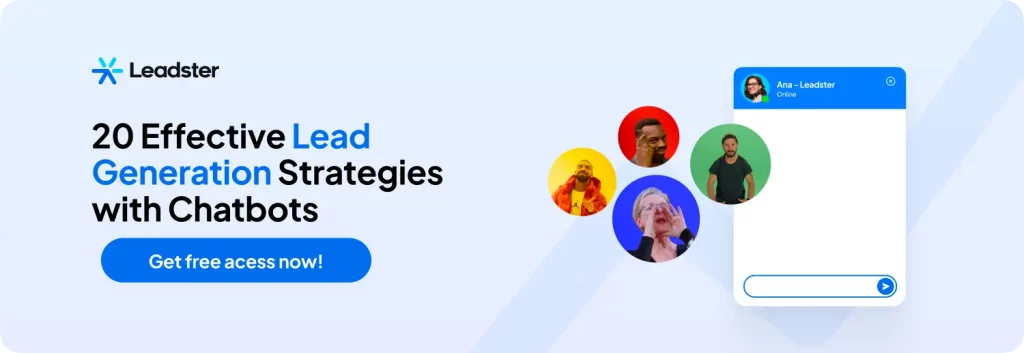
10 Examples of AI in Business
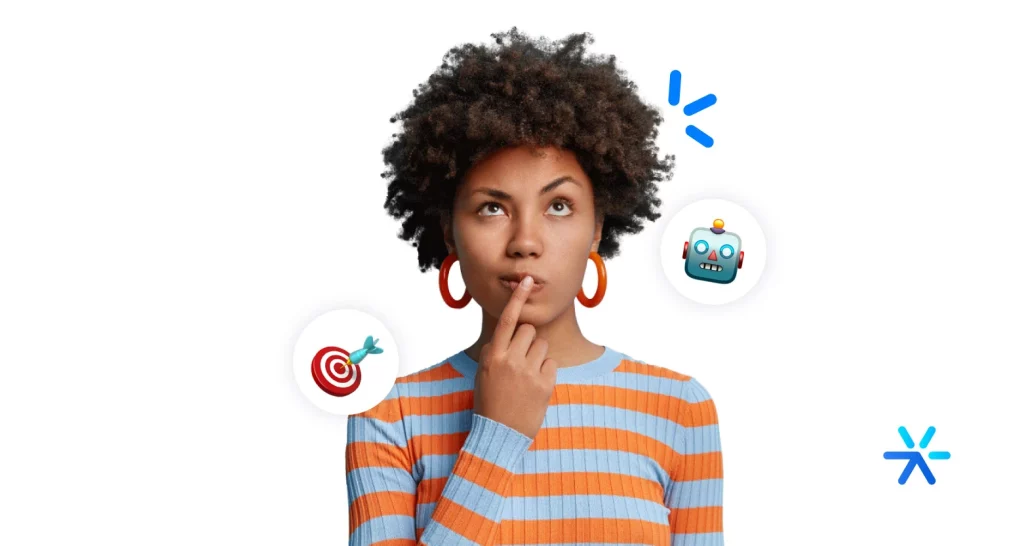
Before we start, it’s important to understand the types of AI that are functioning today in the business world.
We’ve already seen Generative Artificial Intelligence and talked about machine learning, but there are some other important types to mention because we’re going to address them now in the examples of application in business.
The main types of artificial intelligence in use today are as follows:
- Machine Learning: a general concept that deals with systems that, with a reference to real data, can learn from them to better perform their functions;
- Supervised Machine Learning: a system that uses machine learning from examples classified by humans. It’s like the human being the machine’s teacher, offering examples related to the work it will do;
- Unsupervised Machine Learning: when the system is free to learn on its own based on a large database that has not been altered by a human. Think of an AI with full internet access and no one telling it what to prioritize in the search;
- Neural Networks: an AI system that mimics the functioning of the human brain, able to adapt its structure and alter its operating guidelines to achieve its goal more easily, depending on the database and the instructions it receives;
- Natural Language Processing: this is the case of ChatGPT. The AI works with a database and, based on them, uses a simple calculation to choose which is the best word to use after the last one, thus forming a sentence;
- Computer Vision: AI trained to recognize patterns in real images and identify them in other everyday images. These systems are already in full operation today, especially in traffic and public safety.
With that settled, we are now ready to learn about some cases of AI in business. Starting now:
Tax Automation — Deloitte’s TAX-I
Deloitte is a worldwide audit and business consulting firm.
And besides that, it is also one of the main companies today bringing Artificial Intelligence to practical and real uses. In fact, a large part of the examples I’m going to show you here are real cases from Deloitte.
One of these cases is the TAX-I tool. It was created to assist legal aid through the automation of searches for similar cases in Tax Justice in the Eurozone.
What the tool does is analyze thousands of cases that have already passed through the courts, summarize them, and offer predictions about the likelihood of success of a current case.
A quick example: a European company’s legal department has a case in court awaiting judgment.
Deloitte assists the legal department with the tool, which directly offers relevant insights to lawyers based on previous judgments, observing the case’s structure, jurisprudence, and other legal aspects too complicated to summarize here.
Anyway, this is a real case of AI in business, one that is transforming the reality of companies today.
➡️ You can learn more about TAX-I in this study produced by Deloitte.
Social Posts Automation
ChatGPT is already being used today by countless Brazilian agencies and freelance professionals in content marketing.
And the use cases vary greatly. For example: you can use Chat to create a post from scratch, reduce it, expand it, or adapt it for other media.
And with ChatGPT + Midjourney or DALL-E 2, it is possible to create both the post and the image at the same time, without needing to open either Google Docs or Photoshop.
Canva is already offering this functionality today. With AI integrated into the tool, you can create a completely new image and text to accompany it, effectively creating a complete post in a matter of seconds.
But be very careful: all content generated by AI needs revising. You need to fact-check, correct the tone of voice, and make the final result more appealing through marketing and copywriting techniques.
Content Curation
As applications using machine learning evolve, we will encounter more and more cases of AI working alongside writers and content producers to find the latest trends.
This is already happening today, especially through the Buzzsumo platform. Operating on algorithms, AI searches the internet for relevant topics and keywords, also listing posts published by other brands and individuals about the subjects and the statistics of these posts.
One very interesting use case is the newsletter The Clikk. Through Buzzsumo, the curators of the newsletter can find relevant topics to bring to their audience without spending the whole day researching on social networks, groups, and forums.
The tool The Clikk’s team uses is Buzzsumo’s Content Analyzer. It has in its database more than 8 billion articles and 300 trillion social media posts.
When the newsletter curators search for strategic keywords like “marketing” and “technology”, the Content Analyzer delivers a complete analysis of the buzz around them, as well as the most read and shared articles on social media.
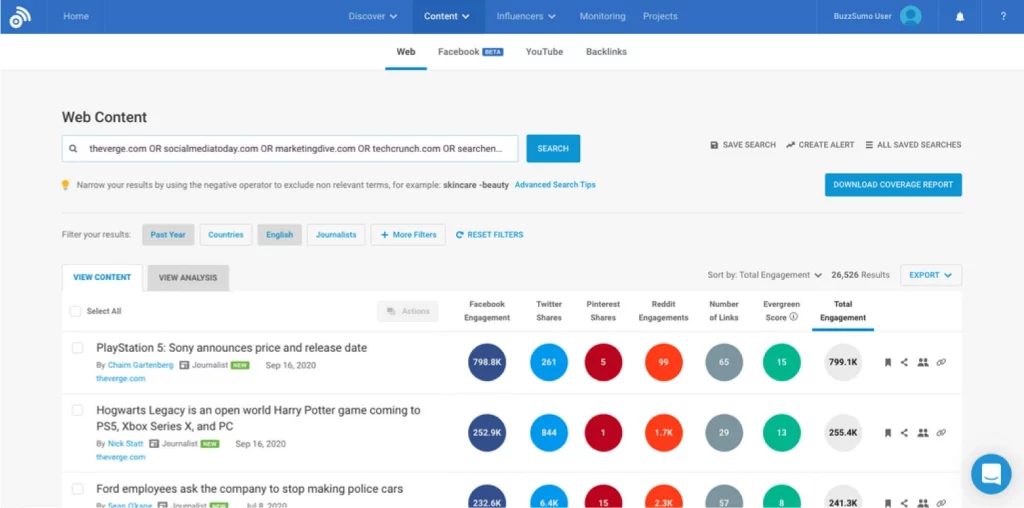
Product Innovation
As we saw in João Ferrão’s case, ChatGPT can also create new products in an exercise of creativity that no AI in business has achieved until today.
But this example is still quite basic: a clothing store isn’t the most original idea on the planet, let’s be honest.
AI is making true leaps in the Product Design area. There are already tools today, like Fotor, that can present concepts and prototypes of products using only text prompts.
Since this area is very strategic and product development takes a good amount of time, we’re not yet seeing concrete examples of AI in business.
Real-Time Search in a Huge Database
Those who have worked in the corporate world for some time will understand this pain: you arrive on your first day of work and someone sends you a Wiki or a page on the Intranet that has “everything you need to know”.
And good luck with that 🥲
These databases, when they get too large, also become impossible to navigate.
To find something in the search bar, you need to use very specific terms, otherwise, you end up getting several links that have nothing to do with what you’re looking for.
Deloitte developed a proprietary Chatbot precisely to solve this issue. Instead of typing “tax cases” and spending hours finding what you want, you can explain to the Chatbot what you’re looking for.
Chatbots like this are not widely available to the market yet. But according to Twan Van Gool, Director of Innovation in Deloitte Global’s audit department, “making such a chatbot is quite simple”.
Well, those are the words of a director in a business consulting company. If it’s easy for him, imagine for developers with access to ChatGPT’s API plugins?
Autonomous Property Security
Moving away from the world of texts and creativity, one of the most developed use cases of AI in business is in property security—more specifically with autonomous drones.
Here we need to talk about two companies: Arm and Sunflower Labs. The former develops chips prepared for machine learning, while the latter creates drones focused on property security.
Sunflower Labs uses Arm’s chips to produce its autonomous drones. They use Machine Vision to map the environment, recognize patterns, and alert security to differences in these patterns.
An intruder, for example, or a leak in some construction work.
One of Sunflower’s most recent cases and its drone (the Beehive One) is happening right now in Osaka, Japan. Japan Infra Waymark uses the devices to map infrastructure in construction.
Content Quantity Review
ChatGPT is already being used today to review a large amount of content, something that takes quite a while with exclusively human editors.
For example: a dropshipping e-commerce store has a huge number of products. They all need descriptions according to the best SEO practices.
Asking ChatGPT to write all the descriptions is complicated. It doesn’t have access to the products to describe them, and the errors would be enormous.
At the same time, it’s possible to create prompts that show the structure of an ideal description. And then ask Chat to review the texts created by humans using the same logical base.
Work Optimization
Let’s use a quick example: a performance marketing agency that produces a large number of ads daily.
The work behind each ad is extensive. You need to create a concept, approve it, create the text, create the art, approve everything, and then publish, measure, and repeat.
Generative AI tools can greatly accelerate this process. A simple prompt becomes a reference image for the art director. And the copywriter can ask ChatGPT to create dozens of copies as inspiration.
With this, the agency’s productivity increases and it can accept new clients more calmly.
Job Satisfaction Data
The pandemic popularized a new way of working: remote work.
But remote work comes with serious barriers, with social isolation being one of the most complicated in the corporate world.
How do you know what the employees think about something the company is doing without seeing them every day? Without chatting informally?
Well, several companies specifically work in this area, promoting the necessary corporate communication for hybrid or fully remote teams. One of them is Slack.
Slack has been implementing Chatbots in its application since forever. One of them is Polly, focused on obtaining information from its users through conversational approaches.
It’s almost like an HR job. Instead of sending forms or conducting NPS surveys, Polly uses conversational approaches to engage employees in answering questions that can be simple or complex, according to your strategy.
The results can be collected and used for data-driven decisions in the future.
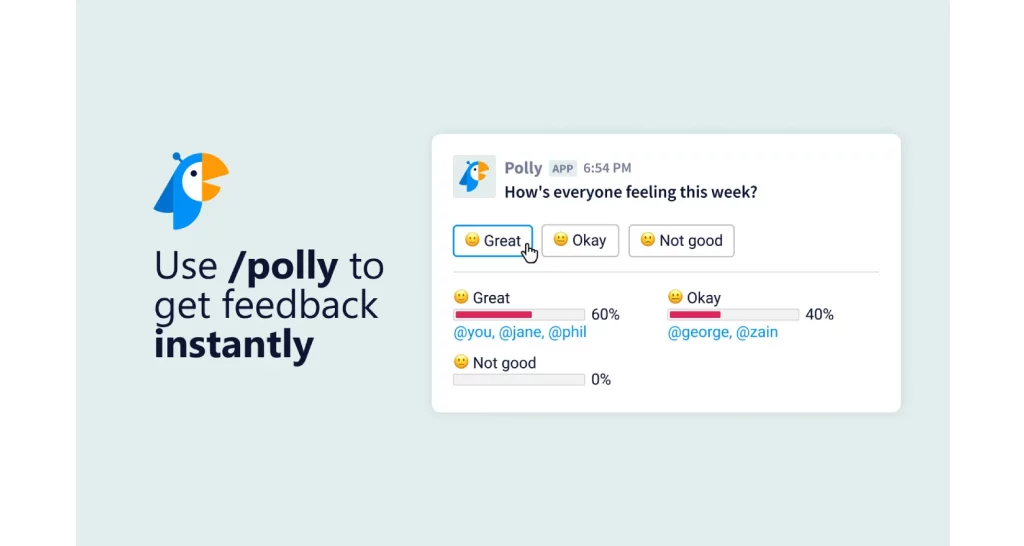
Chatbots for Lead Generation
Chatbots can also be used to maximize lead generation in your company. This is another use of AI in business that is already in practice today.
💡 By the way, you can try it for free now, for 14 days, without a credit card.
The operation is simple: the Chatbot can understand which page your visitor is reading on your website.
With this, it can deliver a personalized message that impacts your visitor exactly where they are in their Buyer’s Journey.
For example: someone is impacted by an ad of yours on Google Ads. The ad leads to a Bottom of Funnel Landing Page. There, the person reads the content, is interested in the offer, and is directed to the Chatbot to take the necessary action.
No forms, no complications: a totally conversational approach.
In our experience, we guarantee 3x more leads from this approach, which works at any stage of the Funnel and on any page of your site—Landing Pages, product and category pages, contact pages, and even individual articles on the blog.
AI in businness red flags
It is important to be cautious when using Artificial Intelligence in business today.
As you may have noticed throughout the text, the technology is still evolving gradually.
We are still at a very early stage, with much of the innovations being created still being prototypes or in very basic stages of development.
Take the example of ChatGPT. It is essential to review anything it says, especially on very complex subjects. The problem is that this need is slowly being replaced by trust as it is being used.
This cannot happen. AI tools are being perfected, often by ourselves — as is the case with systems using Machine Learning.
So, here’s one last warning to wrap up the text: always be skeptical. Always review. But don’t hesitate to embrace innovations because, whether we like it or not, they will emerge.
If you enjoyed this article, I have one last proposal for you. How about innovating today with a Chatbot that uses ChatGPT to suggest CTAs?
Leadster just launched this feature. You can try it out for free today!
See you there, okay? Click on the banner below to start your trial now! A hug and thank you for reading 😉


